A Parent’s Guide to Poison Ivy: From Plant to Rash
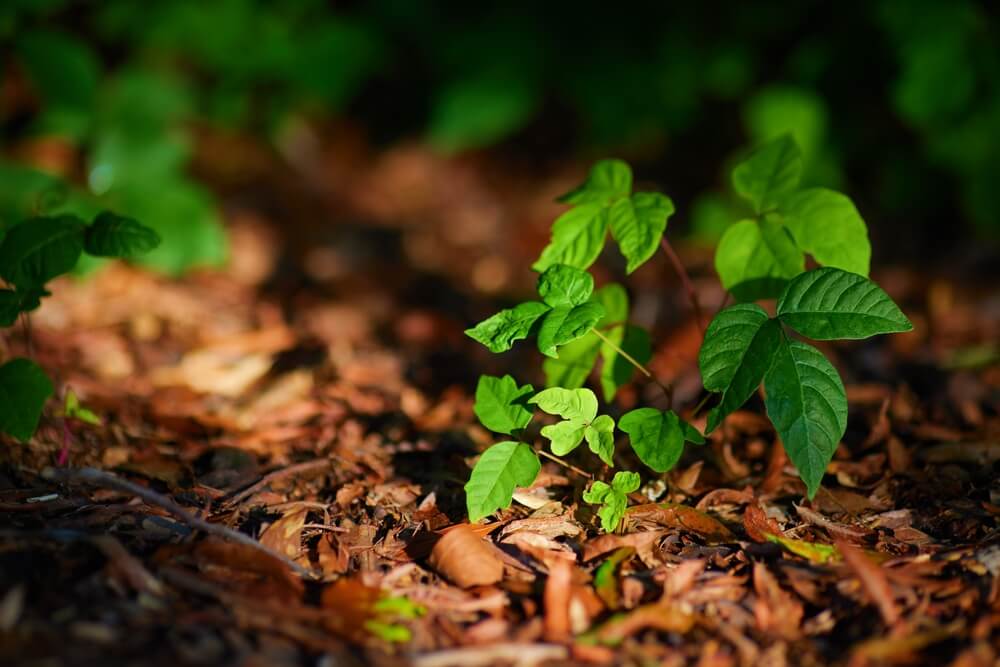
Ever wondered, “What does poison ivy look like?” especially when your curious kids are exploring the great outdoors? You’re not alone!
The best chance you have against poison ivy is recognizing it before it has a chance to come into contact with your skin, but with so many look-alike plants out there—and so many forests to explore!—it can be tough to know what’s what.
We’re here to help. This blog is here to arm you with all the crucial information you need to identify poison ivy and protect your family from its notorious itchy rashes.
Contents:
- What is Poison Ivy?
- How Common Is a Poison Ivy Rash?
- Who Might Get a Poison Ivy Rash?
- What Do Poisonous Plants Look Like?
- Symptoms and Causes of a Poison Ivy Rash
- Management and Treatment
- How Long Does Poison Ivy Last?
- When Should You Call Your Healthcare Provider?
- How Can You Prevent a Poison Ivy Rash?
- Myths and Facts: What You Should Know About Poison Ivy
- FAQs
What is Poison Ivy?
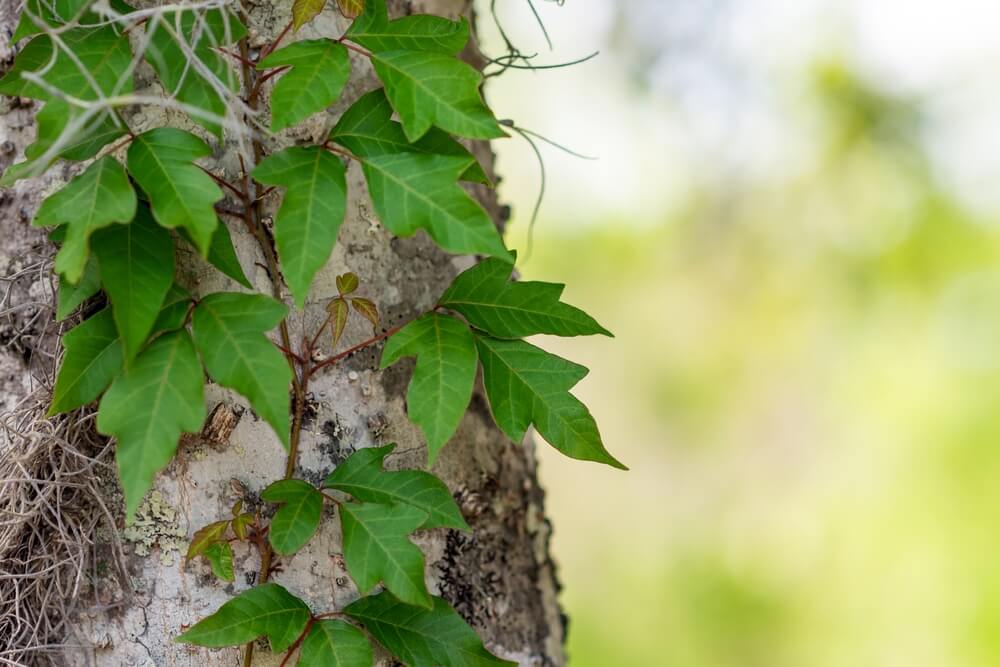
Tanya Consaul Photography/Shutterstock.com
Poison ivy is a plant that can cause an allergic reaction, resulting in an itchy and uncomfortable rash.
The culprit behind this reaction is urushiol oil, which is present in the leaves, stems, and roots of the plant. This oil is incredibly potent and can cause reactions even with minimal contact.
Whether you’re hiking, gardening, or simply enjoying a day in the park, understanding what poison ivy looks like can keep you and your family safe.
Types of Poison Ivy
Poison ivy is native to North America, where it is commonly found in the United States and Canada. This resilient plant thrives in a variety of environments, making it a frequent visitor in both urban and rural landscapes.
It typically favors wooded areas, forest edges, and fields but can also thrive in suburban backyards, along roadsides, and even in urban parks. Poison ivy is highly adaptable and can grow in different forms, whether as a ground cover, shrub, or climbing vine.
Its versatility in habitat preferences makes it essential for parents to be vigilant and knowledgeable about its appearance to avoid contact and the irritating rash it can cause.
There are two main types of poison ivy:
- Eastern Poison Ivy(Toxicodendron radicans): Commonly found in the eastern United States, this variety grows as a vine that can climb trees, fences, and walls.
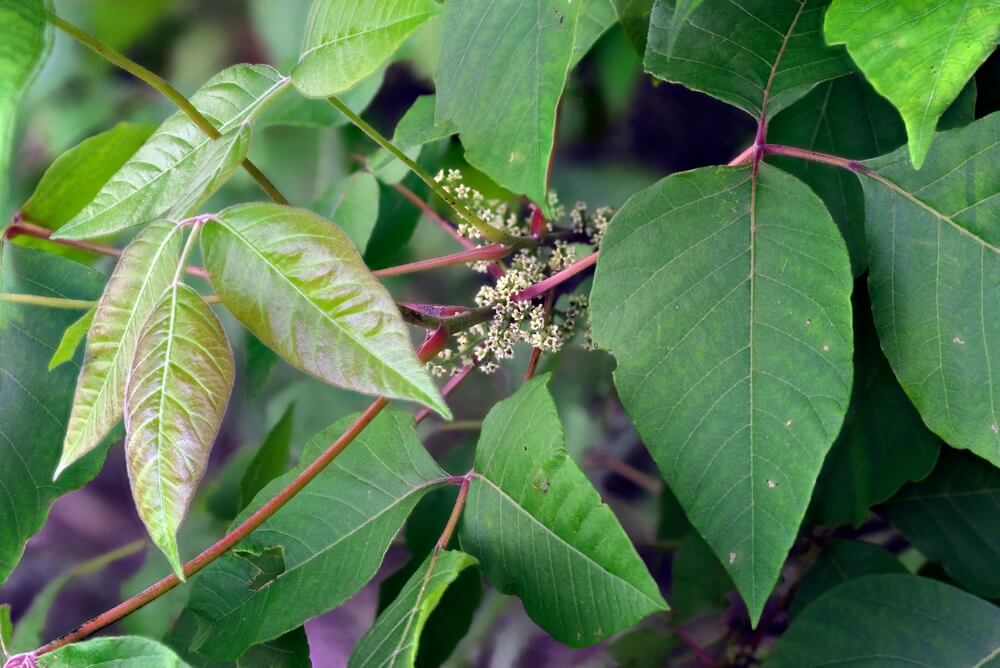
damann/Shutterstock.com
- Western Poison Ivy (Toxicodendron rydbergii): Found in the western United States, this type typically grows as a low shrub.
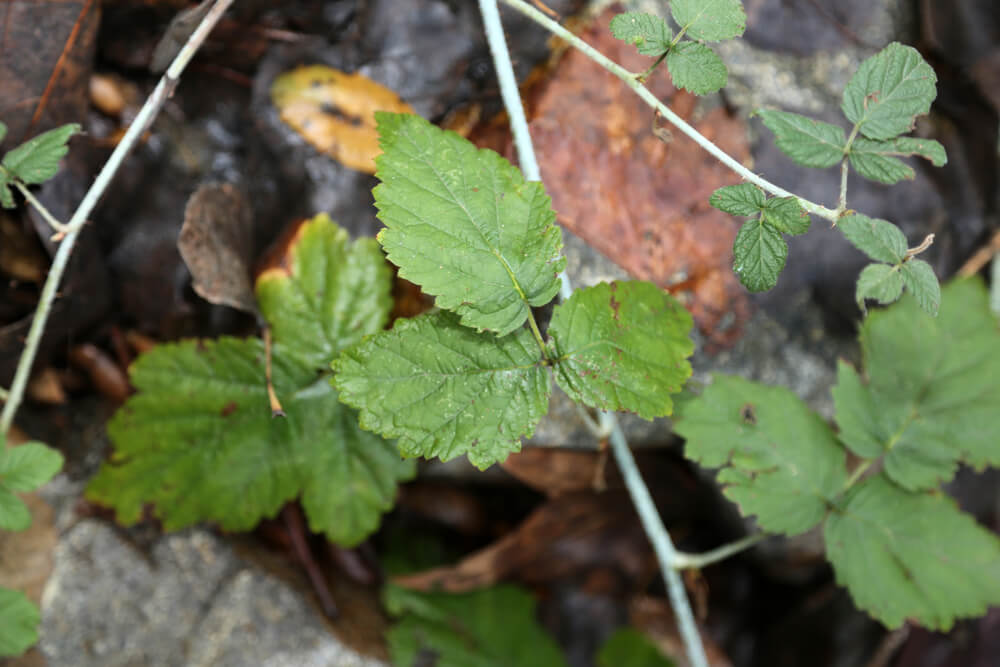
mikeledray/Shutterstock.com
There are similar rash-inducing plants you might encounter in the woods, too, like poison oak, poison hemlock, poison parsnip, and more.
How Common Is a Poison Ivy Rash?
Poison ivy rashes are quite common, especially in North America. According to the American Skin Association, over 85% of people are allergic to poison ivy, oak, or sumac.
These rashes can occur anywhere on the body that comes into contact with the plant, from arms and legs to the face.
A poison ivy rash typically appears within 12 to 48 hours after contact with the plant’s oil, urushiol. The severity of the rash can vary depending on the amount of exposure and an individual’s sensitivity to urushiol.
The rash first starts as red, itchy patches that soon develop into blisters. These blisters may ooze and become crusty, contributing to the discomfort.
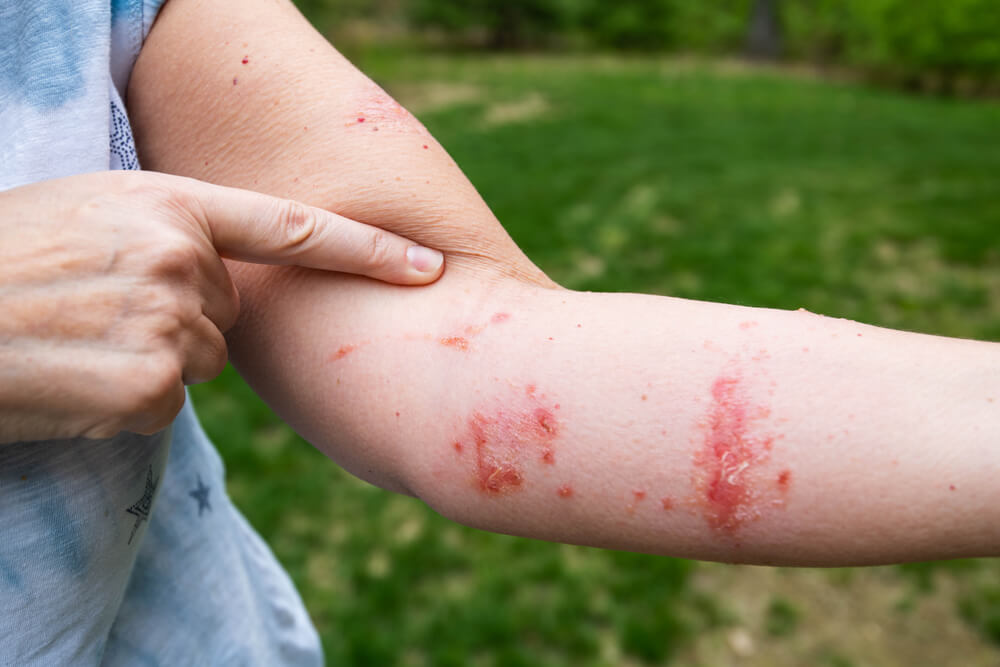
Michael Moloney/Shutterstock.com
The rash caused by poison ivy is intensely itchy, often making it difficult to resist scratching. This itchiness is accompanied by a burning or stinging sensation, especially as the blisters begin to form and ooze.
Identifying a poison ivy rash can be tricky, but there are some key characteristics to look out for:
- Pattern of Distribution: Poison ivy rashes often appear in a linear or streak-like pattern, which corresponds to the way the plant brushes against the skin.
- Blister Formation: Unlike some other rashes, poison ivy rash commonly results in fluid-filled blisters.
- Delayed Onset: The time it takes for the rash to appear (12 to 48 hours post-exposure) can differentiate it from other immediate allergic reactions.
If you suspect you’ve come into contact with poison ivy and start to see these symptoms, it’s important to wash the affected area as soon as possible and avoid scratching to prevent further irritation and potential infection.
Who Might Get a Poison Ivy Rash?

Galina Kovalenko/Shutterstock.com
Anyone can get a poison ivy rash, but certain groups are more prone to exposure:
- Children: Kids love playing outside and exploring, which increases their chances of coming into contact with poison ivy.
- Hikers and Campers: Outdoor enthusiasts often encounter these plants while trekking through the woods.
- Gardeners and Landscapers: Those who work in or around wooded areas are at higher risk.
What Do Poisonous Plants Look Like?
Identifying poisonous plants can be tricky, but knowing what you’re looking for makes it easier. Here’s how to identify poison ivy and other look-alikes.
Poison Ivy
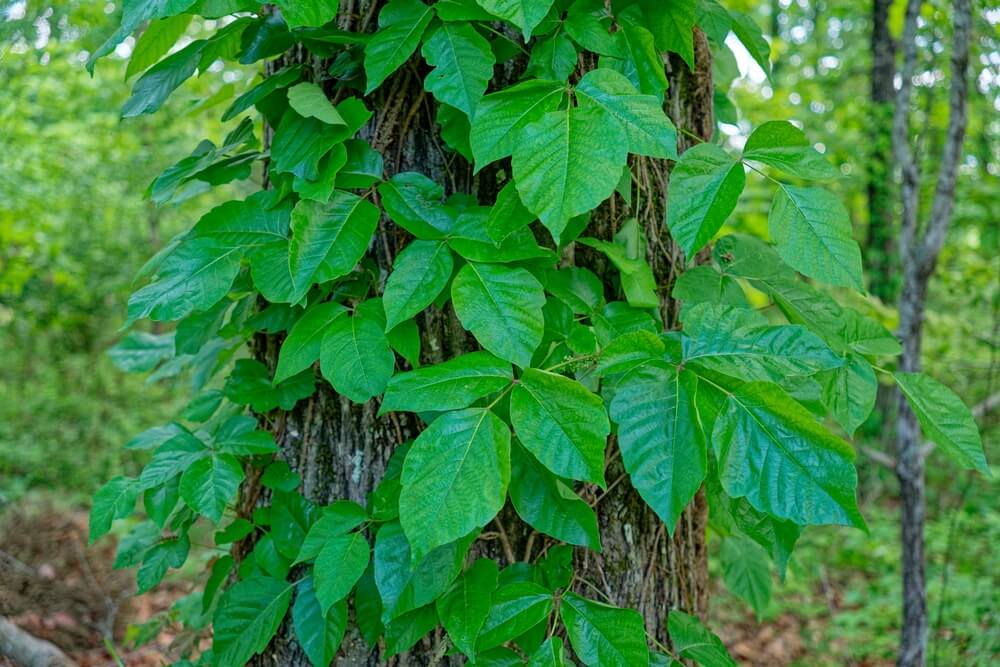
Sandra Burm/Shutterstock.com
Poison ivy usually has three shiny green leaves. Each leaflet has smooth or slightly toothed edges, and the middle leaflet is often longer than the two side ones.
The plant can grow as a vine or a shrub and often features clusters of greenish-white berries. Poison ivy leaves may turn red in the fall, making them easier to spot.
Poison Oak
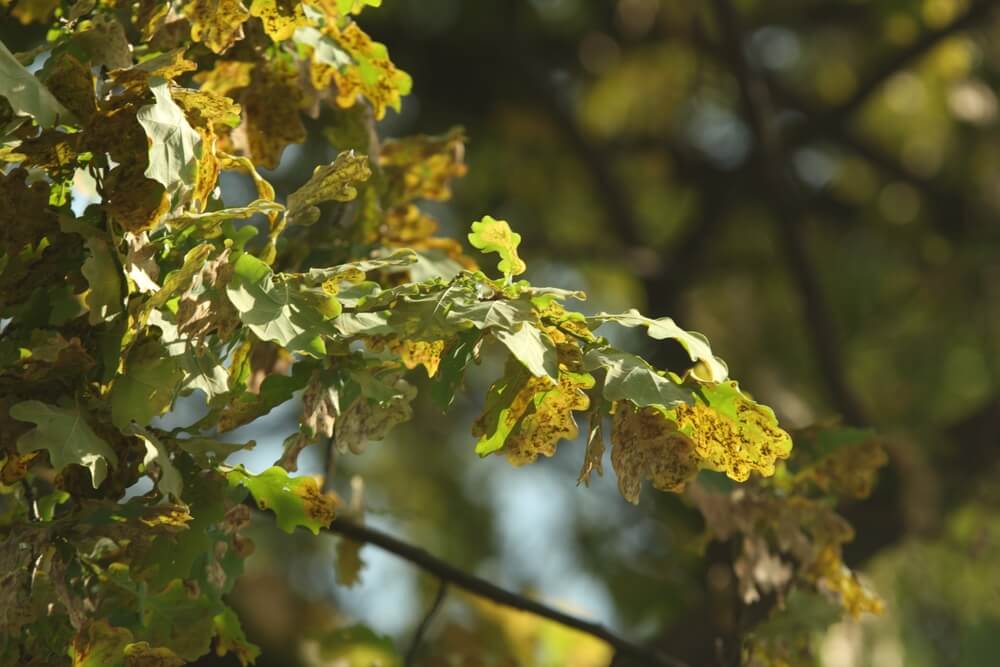
Alexandra Bobir/Shutterstock.com
Similar to poison ivy, poison oak also has three leaflets per group, although sometimes you might see groups of seven. The leaves are usually hairy and have rounded edges, resembling oak leaves.
This plant can grow as a shrub or a vine. Poison oak leaves change color with the seasons, turning yellow or red in the fall.
Poison Sumac
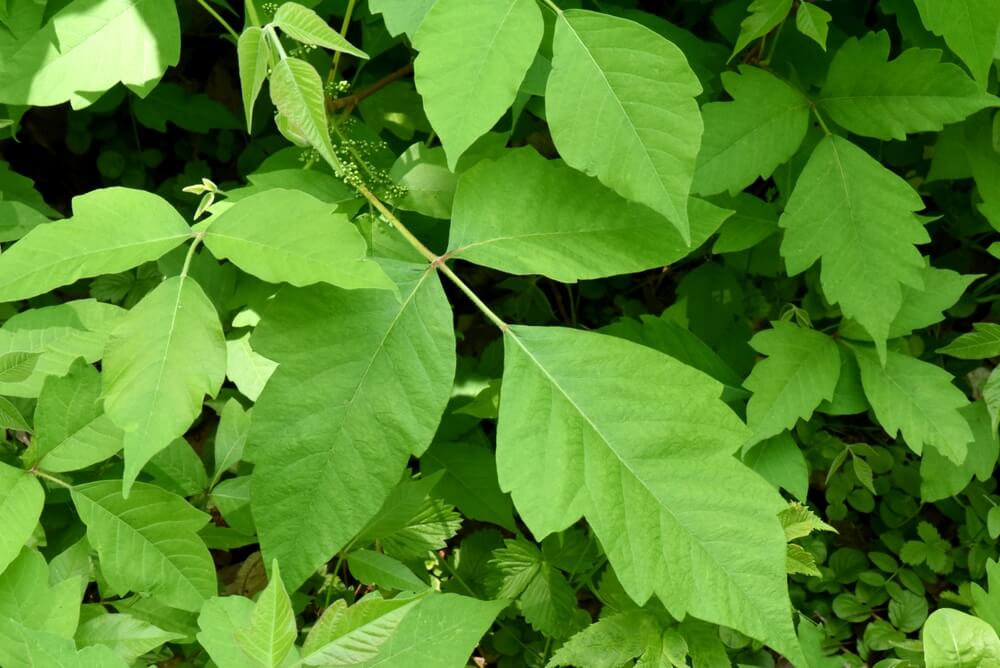
Manfred Ruckszio/Shutterstock.com
Poison sumac is less common but equally nasty. It has 7–13 leaflets per group and typically grows as a small tree or shrub. The leaves are smooth-edged and come to a sharp point.
They can be bright orange in the spring, dark green in the summer, and red or yellow in the fall. Poison sumac also has clusters of white berries that sag downward on branches.
When it comes to keeping your child safe during outdoor adventures, the Findmykids app is an indispensable tool. This app allows you to track your child’s location in real-time, ensuring they are safe and sound, whether they’re exploring nature or playing in the park.
With Findmykids, you can set safe zones and receive instant notifications if your child leaves these designated areas. Stay connected and worry-free, knowing that the Findmykids app helps you keep an eye on your little ones at all times!
Symptoms and Causes of a Poison Ivy Rash
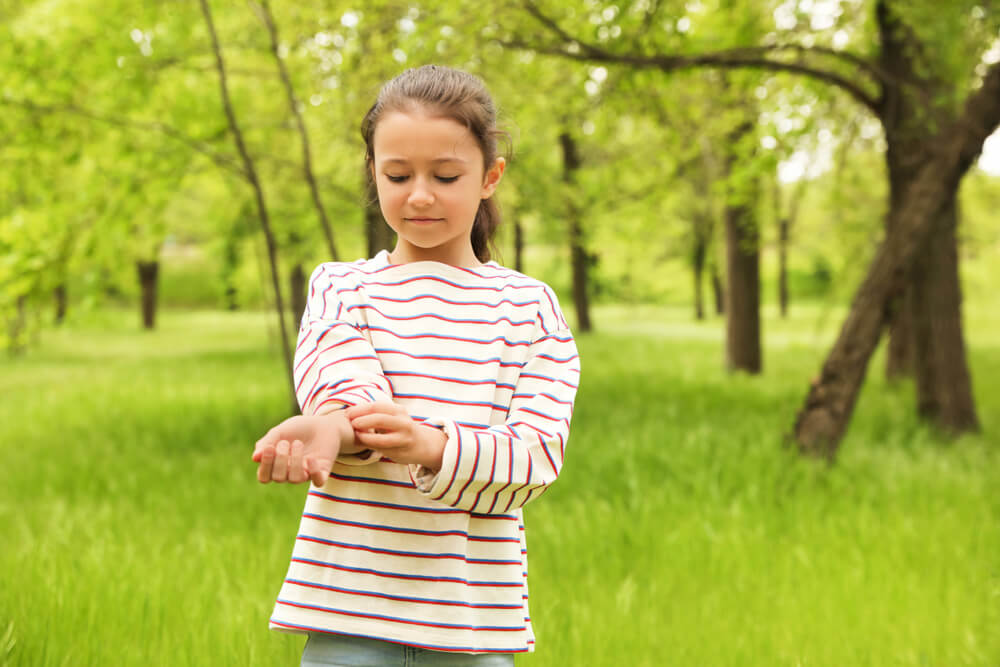
New Africa/Shutterstock.com
Understanding the symptoms and causes can help you identify and manage a poison ivy rash more effectively. So let’s break it down.
Causes
Again, the primary cause of poison ivy rashes is urushiol oil. This oil is incredibly potent and can cause an allergic reaction even if you touch contaminated objects like garden tools, clothing, or pet fur.
The oil can also be transferred indirectly, which means you don’t necessarily have to touch the plant to get a rash.
Symptoms
Symptoms usually appear within 12 to 48 hours after contact and include:
- Red, itchy patches or streaks
- Swelling
- Blisters that may ooze and crust over
- General discomfort and irritation
How It Looks
The rash goes through several stages:
- Initial Contact: The skin becomes red and itchy within a few hours to a couple of days. This reaction is due to the body’s immune response to the irritant or allergen.
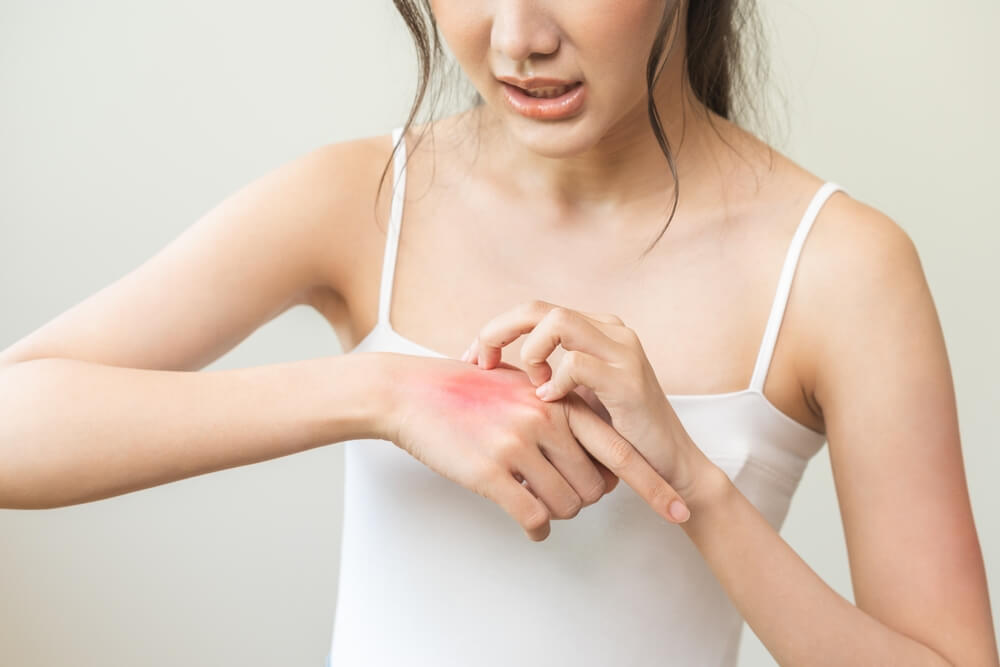
Kmpzzz/Shutterstock.com
- Blistering: Small, fluid-filled blisters or bumps appear, often in a line or streak pattern. These blisters can be painful and are a result of the body’s attempt to isolate and expel the irritant.
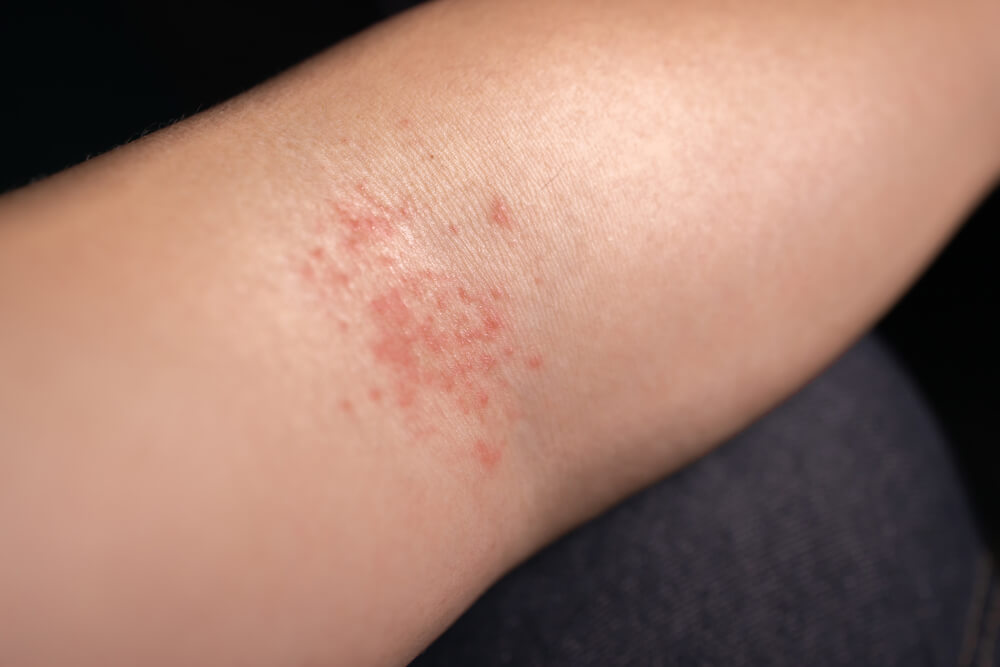
PK_plants/Shutterstock.com
- Crusting: The blisters may break open and ooze before crusting over. This stage can be particularly uncomfortable as the open blisters are susceptible to infection if not properly cared for.

PannaPhoto/Shutterstock.com
- Healing: The skin gradually returns to normal, although peeling and dryness may happen. During this phase, it is important to keep the area moisturized and protected to facilitate complete recovery.
Management and Treatment

YAKOBCHUK VIACHESLAV/Shutterstock.com
Managing and treating a poison ivy rash involves several steps to ease discomfort and speed up healing.
Clean the Area
Wash the affected area with soap and water as soon as possible to remove any remaining urushiol oil. This can help prevent the rash from spreading and reduce its severity. Make sure to wash any contaminated objects as well.
You may want to use a specialized poison ivy wash, like Tecnu, to remove any last traces of the stubborn oil on your skin. Even if a rash has already broken out, using one of these washes can help prevent the rash from becoming more severe.
Apply Topical Treatments
Over-the-counter creams and ointments like hydrocortisone can help reduce itching and inflammation. Applying calamine lotion can also provide relief. For more severe cases, a doctor may prescribe a stronger topical treatment or oral medication.
Take Antihistamines

Pixel-Shot/Shutterstock.com
Oral antihistamines like Benadryl can alleviate itching and help you sleep better. These medications can be particularly helpful if the rash is widespread or causing significant discomfort.
Please note: any medications can only be taken after consulting a doctor!
Cool Compresses
To relieve itching, apply cool compresses or take a lukewarm bath. You can also use over-the-counter anti-itch creams and lotions, such as calamine lotion or hydrocortisone cream.
Avoid Scratching
Scratching can lead to infection, so try to keep your nails short and avoid touching the rash. If you find it difficult to resist scratching, consider wearing gloves or covering the rash with a bandage.
Natural Remedies
Some natural remedies like oatmeal baths, aloe vera gel, and baking soda pastes can also provide relief. These remedies are generally safe and can be used in conjunction with other treatments.
How Long Does Poison Ivy Last?
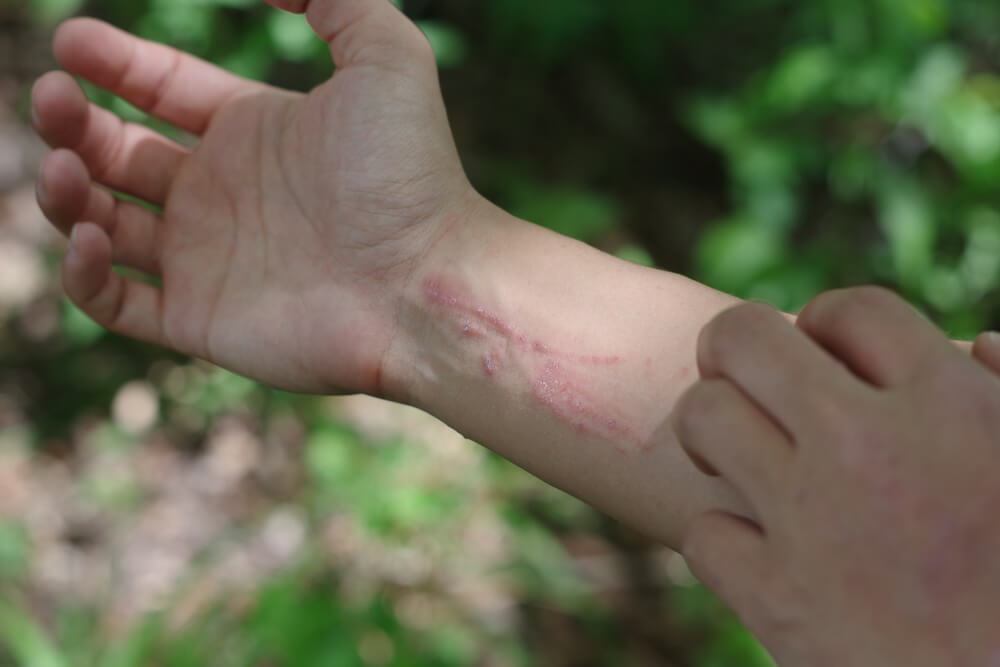
Denise Lynne/Shutterstock.com
A poison ivy rash typically lasts between 1 to 3 weeks. Mild cases may resolve within a week, while severe cases can linger for longer periods.
If the rash persists beyond three weeks or shows signs of infection (such as increased redness, warmth, swelling, or pus), it’s time to call your healthcare provider.
When Should You Call Your Healthcare Provider?
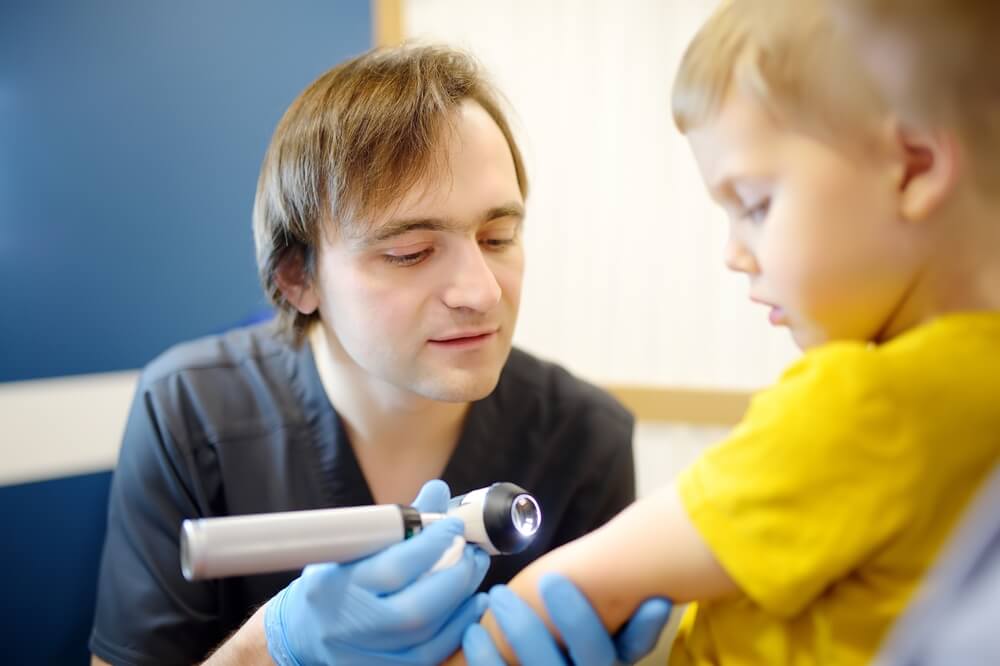
Maria Sbytova/Shutterstock.com
Seek medical attention if:
- The rash covers a large area of your body.
- You have difficulty breathing or swallowing.
- The rash is on your face or genitals.
- You develop a fever or signs of infection.
If you have a severe reaction, you should also seek medical attention immediately. A doctor may prescribe oral steroids to reduce inflammation and speed up healing.
How Can You Prevent a Poison Ivy Rash?
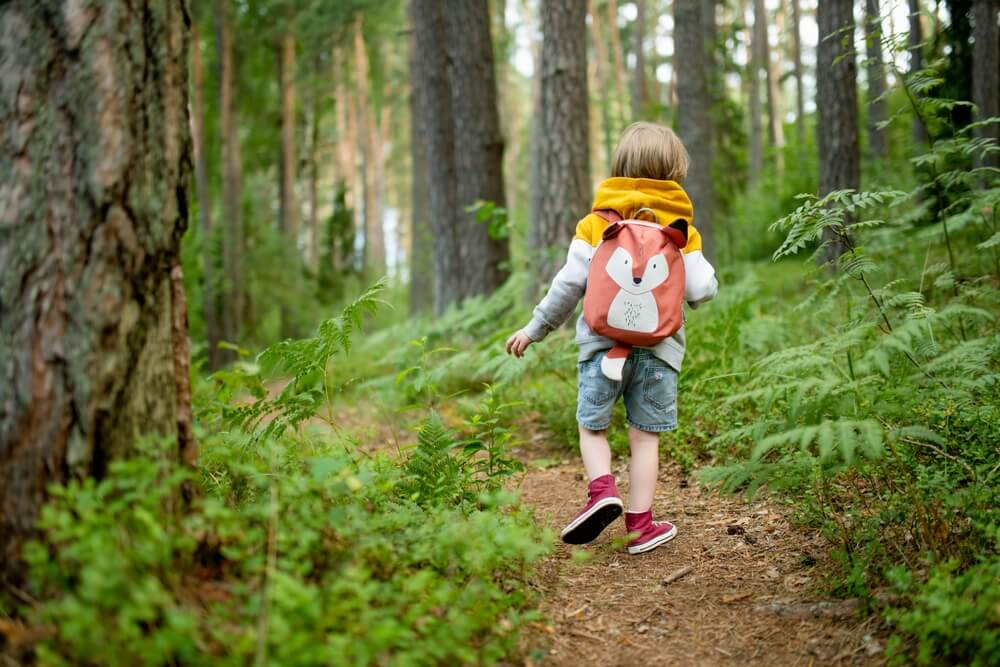
MNStudio/Shutterstock.com
Preventing a poison ivy rash involves a few key steps.
Identify and Avoid
Learn to recognize poison ivy, oak, and sumac and steer clear of them. Familiarize yourself with their appearance in different seasons. Remember, “leaves of three, let them be.”
Wear Protective Clothing
Long sleeves, pants, and gloves can help shield your skin from contact. Consider using specialized outdoor clothing designed to repel urushiol oil.
Use Barrier Creams
Products like IvyBlock can provide an extra layer of protection. Apply these creams before heading outdoors to minimize your risk of exposure.
Clean Up Properly
Wash clothes, gear, and pets after spending time outdoors to remove any urushiol oil. Use hot water and detergent, and consider using a separate laundry load to avoid contamination.
Myths and Facts: What You Should Know About Poison Ivy
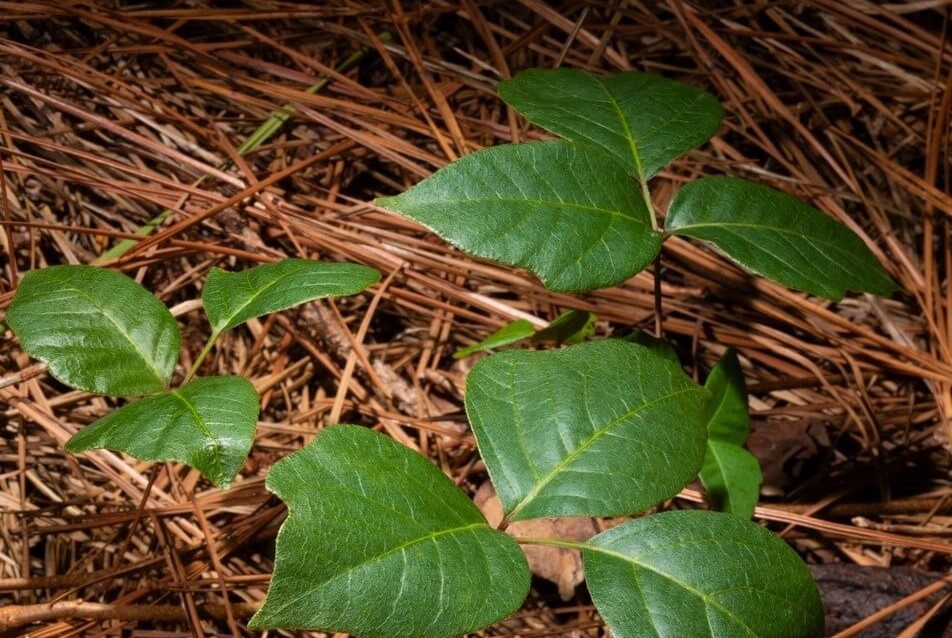
Guy J. Sagi/Shutterstock.com
There are many misconceptions about poison ivy. Let’s clear them up!
Myth 1—You Can Catch Poison Ivy By Being Near the Plants
Urushiol oil is the culprit behind the infamous poison ivy rash. This resinous oil is found in the leaves, stems, and roots of the poison ivy plant. Simply being near the plant is not enough to cause a reaction.
You must come into direct contact with the oil, which can adhere to your skin, clothing, or even your pet’s fur. Just remember, touching anything that has come into contact with urushiol oil can also transfer it to your skin.
Myth 2—Scratching Spreads the Rash
Scratching a poison ivy rash might feel relieving and indulgent, but it’s not what causes the rash to spread. The spread occurs only if urushiol oil is still present on your skin when you scratch.
This can distribute the oil to new areas, resulting in additional rashes. To prevent spreading, wash the affected area with soap and cold water as soon as possible after exposure.
Myth 3—Dead Poison Ivy Plants Are Safe to Touch
Many people assume that once a poison ivy plant is dead, it no longer poses a threat.
However, urushiol oil can stay active on any part of the plant—dead or alive—for up to five years. This means handling dead poison ivy plants can result in the same itchy rash as touching live ones.
Always use caution and protective gear when dealing with any part of the plant, regardless of its state.
Myth 4—You Can Develop Immunity to Poison Ivy
While it might seem logical to think that repeated exposure to poison ivy could build up immunity, the opposite is often true. With each exposure to urushiol oil, your body’s sensitivity may actually increase.
This heightened sensitivity can lead to more severe allergic reactions over time. Thus, you really do need to avoid contact whenever possible.
Keep Your Family Safe and Itch-Free

ESB Professional/Shutterstock.com
Navigating the great outdoors with kids can be challenging, but knowing what poison ivy looks like can save you and your family from a lot of discomfort. Always be vigilant, educate your children, and take preventative measures to avoid contact with these plants.
Remember, a little knowledge can go a long way in keeping your family safe and itch-free.
And don’t forget to try the Findmykids app—a valuable resource for parents. This app allows you to monitor your child’s location in real-time, ensuring their safety during outdoor play. With features like setting safe zones and receiving instant alerts if your child leaves these areas, Findmykids provides peace of mind while your children explore and enjoy their surroundings.
Got any tips or stories about dealing with poison ivy—or photos to help other parents better identify this nasty plant? Share them in the comments below!
And if you found this guide helpful, don’t forget to share it with other parents.
FAQs
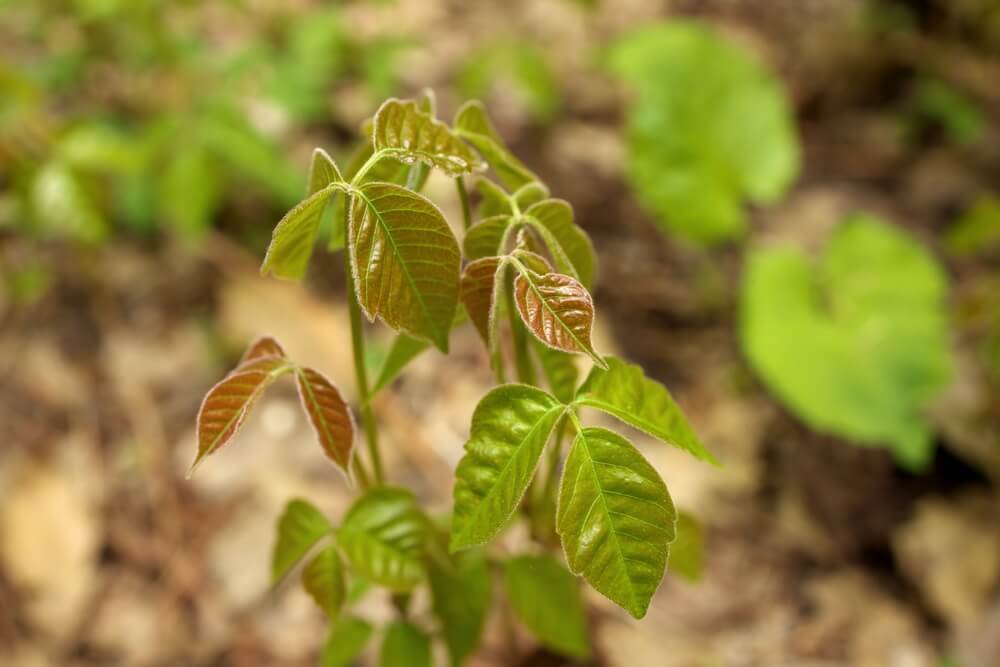
Mark van Dam/Shutterstock.com
How can I tell if it’s poison ivy?
Look for three shiny green leaves per group, often with a longer middle leaflet. The plant can grow as a vine or shrub and may have greenish-white berries.
What does poison ivy look like on the skin?
It usually appears as red, itchy patches or streaks, followed by blistering and possible crusting over.
What can be mistaken for poison ivy?
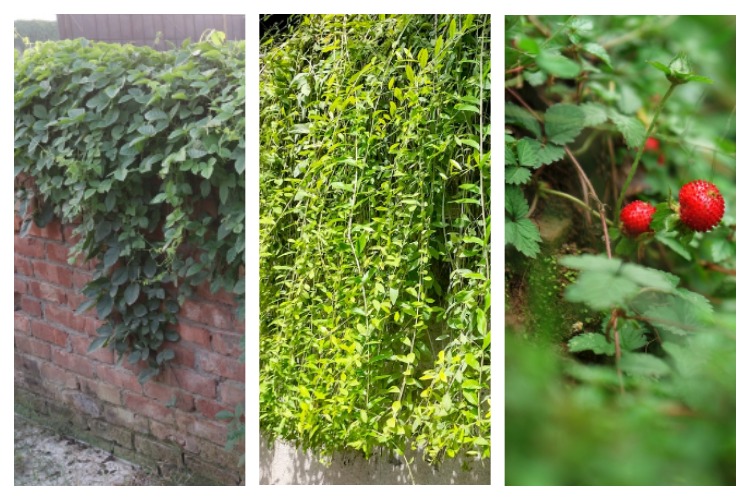
Virginia creeper, boxelder, and wild strawberries. Credit: CMYK MAKER/Hera photo12/JITHIN K SOMAN/Shutterstock.com
Plants like Virginia creeper, boxelder, and wild strawberries can sometimes be mistaken for poison ivy due to their similar leaf patterns.
Can you get rid of poison ivy?
Yes, you can remove it from your yard by pulling it out by the roots or using herbicides. Always wear protective clothing and wash thoroughly afterward.
Can dogs get poison ivy?
Dogs are generally not affected by poison ivy, but they can carry urushiol oil on their fur, which can transfer to humans. Always wash your pets after they’ve been in wooded areas.
The picture on the front page: Olesia Bilkei/Shutterstock.com
Проверьте электронный ящик



















